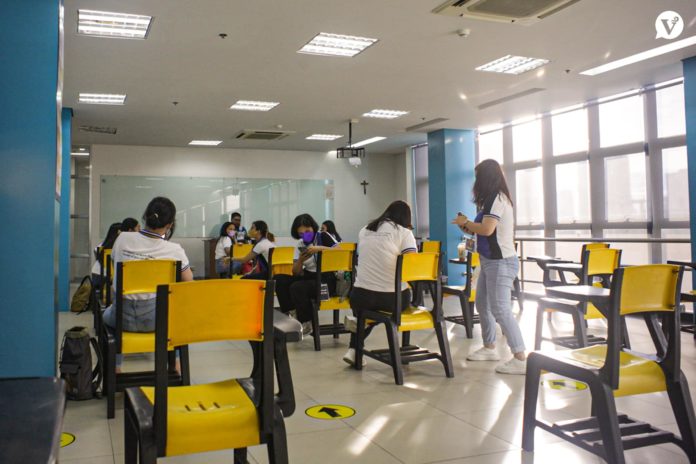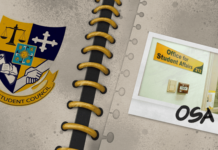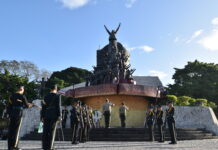
RAPID inflation is putting additional burden on Thomasians already struggling financially as UST has begun limited face-to-face classes, students told the Varsitarian.
Inflation hit 6.9 percent in September 2022, the highest in nearly four years, according to the Philippine Statistics Authority. National Statistician Dennis Mapa said the acceleration was due to food and non-alcoholic beverages, which rose by 7.4 percent from the previous month.
Jemae Joy Camba, a student with irregular schedule (SWIS) from the College of Education, said despite lifestyle changes, her monthly allowance is not enough for her needs.
“Noong senior high ako, naka-dorm din ako, allowance ko 20,000, pero napapagkasya ko a month. Ngayon, hindi umaabot ng isang buwan,” she said.
Camba rents in a dormitory on Lacson Ave. worth P5,000 monthly and travels home to Pangasinan when online classes prolong. She is frustrated that the full face-to-face classes have not been implemented yet.
“Nung first year ako, gusto ko talaga ng face to face kasi nakakapagod na [ang online]. Okay naman limited face to face at first, kaso ‘yung pagiging limited ay sobrang limited. Parang ngayong nag-dodorm ako, nasasayangan ako. Next face to face ko, November pa. Anong gagawin ko sa buong October?” she said.
Ysabelle Ablen, a SWIS from the Faculty of Arts and Letters, said living separately from family is a daily struggle, especially in budgeting.
“[N]aramdaman ko kung paano mag-budget and kung ano ‘yung mga need talaga unahin sa hindi. Once kasi pala talaga na mag-isa ka na lang na magha-handle, wala kang ibang magagawa kundi mas unahin ‘yung important things kesa sa mga wants,” she said.
Blended learning for Ablen continues to be a burden because she has to spend on commuting and prepaid load.
“Sobrang sayang kasi isang subject lang ‘yong papasukan per day. For example, sa first subject, face to face, tapos second subject biglang online. Parang ang hirap kasi aside sa gastos sa transportation, need pa magpa-load para makasali sa next class,” she said.
Adding to financial woes for students are laboratory and culinary equipment needed in their fields, which could cost double digits.
Adrienne Grace Alvarez, a sophomore at the College of Tourism and Hospitality Management, struggles to produce academic-related materials due to the high prices of culinary products.
“I have spent almost P30,000 on academic-related expenses already: P15,000 for uniform costs and the other P15,000 for the ingredients that I needed. It is difficult kasi ang taas ng prices ng mga bilihin dahil nga sa inflation,” she said.
Cassandra Joyce Herrera, a sophomore from the College of Nursing, grapples with budgeting daily expenses and equipment for her hospital duties.
“Sa nursing, ang ni-require samin is stethoscope. Diba hindi naman kagandahan ang healthcare system dito? ‘Pag pumupunta kami sa mga pinag-dudutyhan namin na hospital, walang pang-BP, thermometer, mga tissue, gauze, mga cotton buds. Kaya kami bumibili ng mga ganon,” she said.
Balancing act
Stubbornly high prices pushed students to be more cautious about spending their money to avoid being broke.
Bea Rose Gelindon, a junior from the Faculty of Arts and Letters, is trying her best to avoid the temptation of buying expensive food.
“Before, I can satisfy my cravings without hesitations. But now, I need to think it over if I should spend my money on a 120-peso meal or just eat my dinner at home,” she said.
Gelindon lives in Montalban, Rizal, commuting for nearly three hours to UST – a primary consideration of how she budgets her 500-peso allowance.
“[W]henever I spend money on food or wants, I feel guilty kasi at the back of mind, may nagsasabing, ‘pang-pamasahe mo na lang sana yan,’ kaya mahirap talaga,” she said.
Camba has been a frequent patron of eateries around UST for lunch and dinner. Sometimes, she resorts to canned goods to save money further. But she has nothing left for breakfast, considered the most important meal of the day.
Herrera, meanwhile, is cooking a viand suitable for a week to cope with rising prices.
“Para magtipid, bibili ako ng Linggo, lulutuin ko good for one week. Minsan umaabot ng two weeks kasi ‘di ako malakas kumain,” she said.
Go full face to face
Students believe limited face-to-face classes are “too limited,” which adds to their financial burden.
“[F]inancially speaking, I don’t prefer limited in-person classes set up. Kasi dagdag-gastos din ‘yung weekly allowance, uniform, and gamit pang-school, both supplies and other necessities para sa uniform. Imbes na maitabi ‘yung perang iyon para sa wifi and or load lang, additional burden ‘yun for others na hindi […] stable at limited lang ang source of income ng parents,” Gelindon said.
Herrera, whose college was one of the first to return to campus since the pandemic began, said enduring half a week of online and half a week of in-person classes was unsustainable.
“Dati kasi no’ng uwian pa ako, three hours biyahe kasama na ‘yung traffic. No’ng nag-dorm naman ako, hindi sulit. Kasi three days online, three days duty. Minsan mag-oonline pa iba do’n,” she said.
“Dati, gusto ko face to face na. Wala ako matutuhan sa online. Ngayon, gusto ko na lang online. Kaya kung i-pupush nila face to face, dapat full na,” she added.
For Alvarez, the University could choose only one of the two modes of learning.
“[P]ick between the two na lang so it’s less hassle to students. Hybrid classes are a huge hassle, especially to those students living in provinces that have to travel hours to sometimes attend only one class, which is highly unacceptable,” she said.
The University has been in Enriched Virtual Mode since 2020, even as several programs transition to limited face-to-face classes. It has yet to announce whether it will implement full in-person classes for all next semester or academic year. Chalssea Kate C. Echegoyen and Niña Angelica M. Rodriguez

















